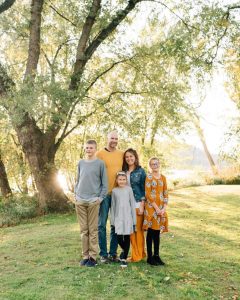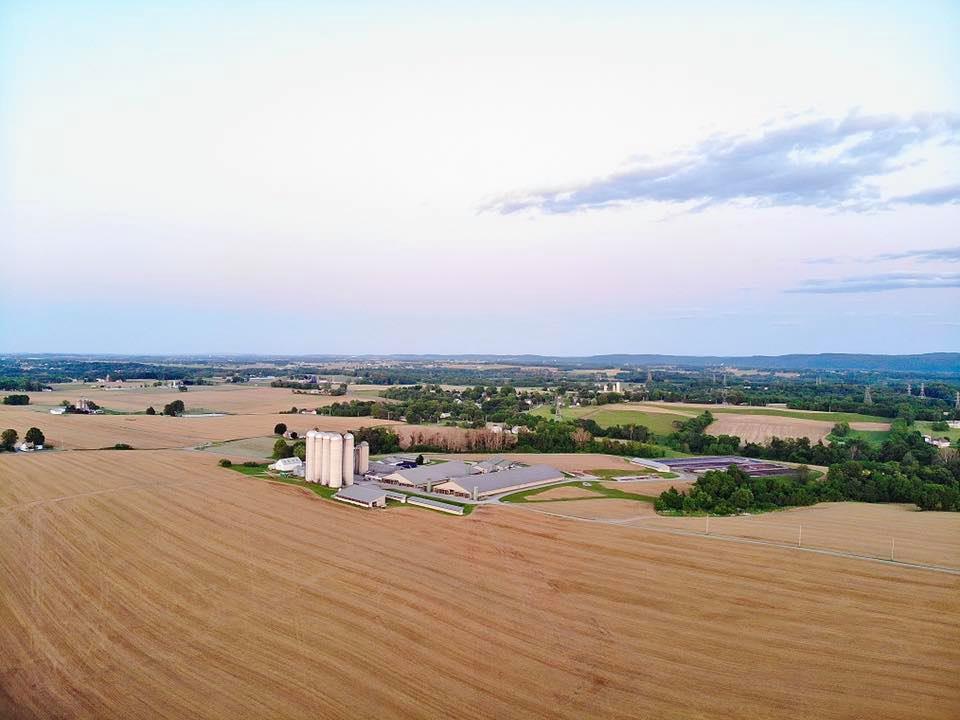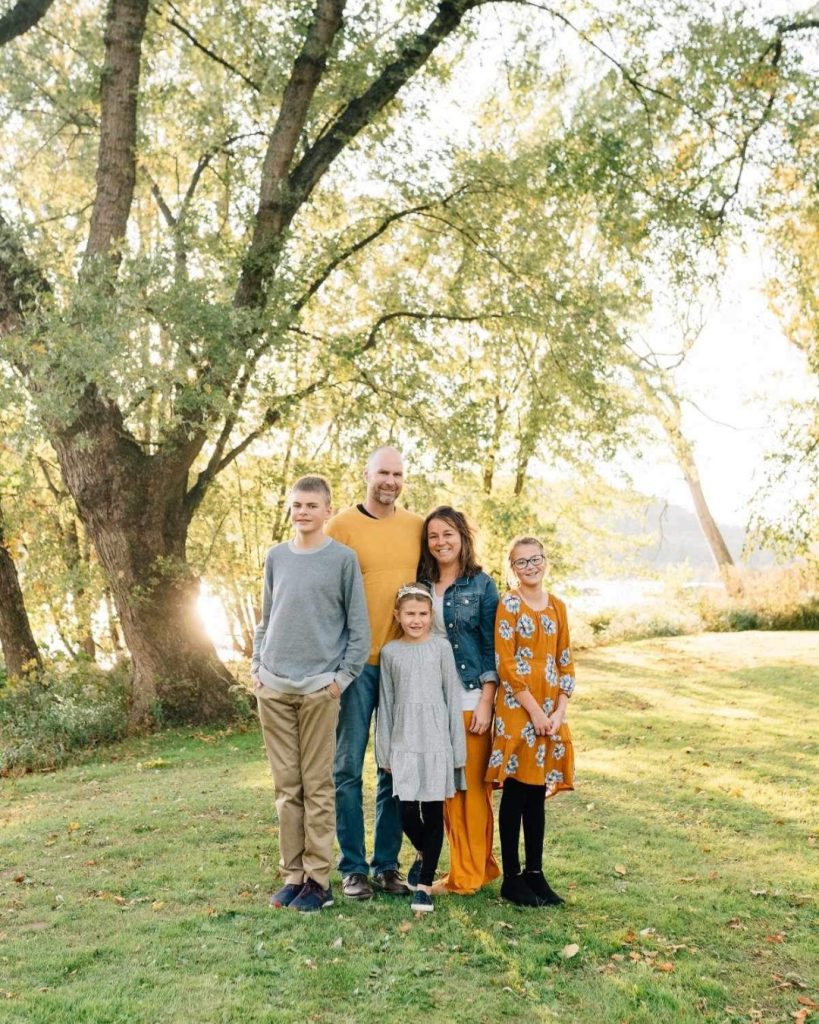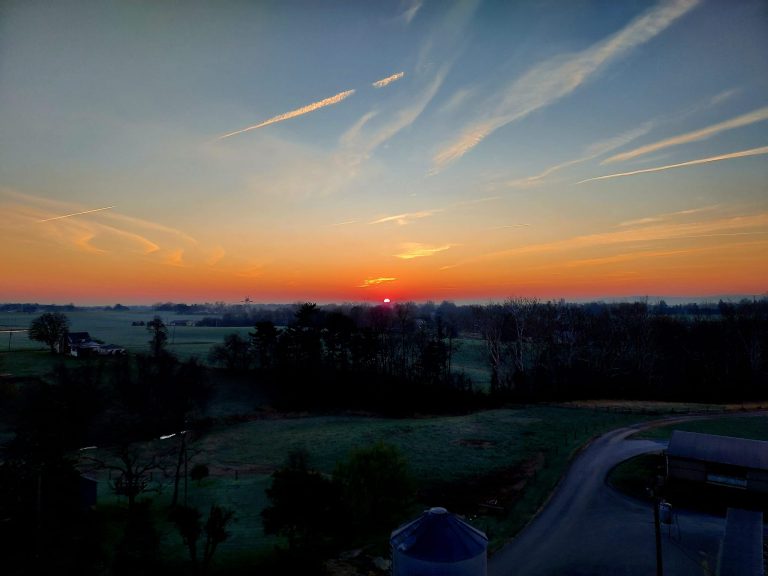
Justin Risser Was Interviewed in the “Cow-Side Conversations” Podcast
In the Center for Dairy Excellence’s latest episode of the “Cow-Side Conversations” podcast, Justin Risser of Meadow Vista Dairy in Lancaster County, Pennsylvania shares how his team manages the dairy operation with an individualized approach – from caring for their crops and their cows to making reproduction decisions, managing employees and allowing change to happen between generations. Justin discusses unique approaches they have taken with dry cow management and the impact those decisions have on metabolic illnesses. He also describes his family’s recent transition process and gives an honest look at the farm-level, financial and relationship-driven decisions that went into it.
Justin opens the podcast by describing the size and scale of his family’s dairy operation. They milk approximately 875 cows and farm about 726 acres in the Northwest corner of Lancaster County. Justin is part of a three-way partnership with his father, Gerald, and uncle, Donald. They also have a small team of employees, including two herd managers and a crop manager. In addition to taking a hands-on approach to managing their dairy, the Rissers work to build trust with their team and help them find their passion.
“When it comes to management structure, we are hands-on managers. We treat each field and each animal individually. We’re a larger herd, but we have characteristics of a smaller herd in that we give a little bit more individual attention. Our core goals are sustainability when it comes to the natural resources we are endowed with – whether it be water, the fields or the topsoil to financial progress, production growth, and giving back in the community,” Justin shares in the podcast. “We try to manage each area of the farm to the best of our abilities and if we’re not the best person to manage that area, then we have an employee who can do a better job. We always try to pick the person who’s most passionate about each area on the farm and have them really take control and take the reins on it.”
The generational transition process between family members has been a big part of their story. Justin says they started the conversation about business succession in 2012, and in 2020, they decided to meet as a family and continue the discussions.
“Coming out of the pandemic in 2020, we thought it was a good time to sit down as a family and transition more of the equity from the senior generation to the junior generation. It was at that time that my cousin, who is my generation, shared that he wanted to divest his interest and leave the dairy,” Justin explains. “So our [transition] approach quickly changed. We were talking about changing equity from two seniors to two juniors and it quickly became: how do we funnel everything down to one partner? The buyout went from two senior partners to two senior partners and one junior partner.”
Justin and his wife took a few months to consider how the financial burden and management responsibilities that came along with the transition would impact their family and lifestyle. They worked with a Transition Team through the Center for Dairy Excellence, which included a group of their most trusted advisors who also served on their Profit Team over the past three years. Justin says the team includes their veterinarian, banker, accountant, nutritionists, a team leader and family members. Together, they helped them evaluate the emotional and financial impacts of the business transition and create a plan for how to move forward.
“My wife and I sat down individually with the team, and so did my parents and my uncle and aunt. We laid out all our feelings and came up with a plan. Ultimately, I didn’t feel like I was being called anywhere else. It felt like it was right for us to continue this operation. We sat down with the team and said, ‘Well, the finances look daunting but we want to continue.’ And I distinctly remember my accountant looking at me and saying, ‘You tell us what you want to do and we’ll figure out how to make it work,’” Justin shares. “So I felt good about that. The transition wouldn’t have gone well had we not had really good consultants. Having that prior relationship with them helped us get a jumpstart on things, because we knew each other, we knew what we ultimately wanted to accomplish, and they knew the whole family.”

Their team of advisors also helped the Rissers formulate a plan for the individual who was exiting the dairy, how to bring on a new crop manager, and how to move forward with payouts and other financial decisions. During the podcast interview, Justin describes some of the steps that helped his family navigate both the complex emotions and the financial implications:
- They each filled out a questionnaire to identify their individual emotions, needs and dreams. “I think it’s good to do that personal assessment and take the time to reflect on what this transition could look like. We milk cows, but is that what we always want to do? Or do we want to go a different path and maybe do more value added or crop more ground? You never know until you start dreaming and thinking about that kind of stuff.”
- They found ways to protect their cash flow. “A transition is a cash drain. I hate to say it that way, but you don’t get any return on buying out partners. That was my concern all along, so the main thing we looked at for the success of the operation was having good cash flow and protecting that cash flow. When we looked at buying out three partners, we tailored the buyout to the loans as they were being paid off. We had a number of loans and they were all staggered as far as when they were set to expire. That involved setting up deferments on payments and paying interest in lieu of principal to certain partners until certain loans got paid off. We didn’t want to stress the dairy for the next few years and then hand it over to the next generation in a cash flow stress situation. We wanted to send it into the transition on good footing.”
- They worked toward a mutual goal and knew when to bend. “It took buy-in from all of us [partners] to realize we all had the same common goal. If we all want to see the dairy and the farm thrive, then we needed to be willing to bend in certain directions when it came to relative value of your equity, how that payment is going to arrive, and in what time and what fashion.”
Throughout the podcast interview, Justin also shares how they maximize cow comfort and herd health. Without a lot of land available around them, Justin says their goals are centered around increasing production per cow by maximizing comfort.

“We’ve noticed over the years that not every cow needs intramammary treatment. We give cows the chance to self-cure, so reducing antibiotic use in mastitis is another goal. We watch those cows, and in some of the minor cases, we give them two to three days. Usually they start to clear up on their own,” Justin explains. “If we find one that needs antibiotics, we try to treat longer rather than shorter. We go for the cure rather than jump the gun to get her back in the tank sooner. The last thing we want to do is undertreat and then have her become clinical two weeks down the road.”
Justin says his team also aims for a high level of consistency when it comes to calf care and takes a unique approach with dry cow management. Their dry cows are housed indoors in free stalls bedded with sand. They give the dry cows a foot bath each week and follow a low calcium diet that’s very low energy – an approach they started in 2017.
“I had the hardest time understanding this kind of dry cow ration, but we’ve now been on it seven years. Every year that goes by, it seems like the health gets better in our dry cows. I didn’t think the cows would milk on this kind of ration because it’s a very cheap ration, and it can separate easily if it’s not mixed well. But it prevents them from becoming too heavy or sluggish,” Justin says. “When they come in [to the milking herd] with the right body condition, they just take off. The two to three-day fevers that a lot of herd managers will see don’t really exist if the cows are coming in with good body condition. In terms of metabolic illness in our transition cows, we hardly treat anything anymore.”
When it comes to breeding and reproduction decisions, Justin and his team do their own ultrasounding work and often look at cows every week. Justin says this helps them focus on each individual cow while remaining flexible and open-minded.

“We arbitrarily have a line at 200 days in milk that cows need to be bred back, but here again, this is where we look at each individual cow. If they’re 200 days in milk and they’re a good young animal, have high components or don’t have high somatic cell, we’re not one to shy away. We keep trying on cows,” he adds. “I don’t have one line that we use for all cows as far as reproduction, because I want to keep those good cows around. If that means she has to milk 450 days before we dry her off, we’ll just make sure she transitions well by having her on that low-energy, dry cow ration.”
To monitor their herd health and other dairy management practices, Justin works with their Profit Team to track their herd metrics and compare the farm’s performance across multiple months and years.
“Our Profit Team meets three times a year, and those consultants have a lot of industry knowledge. They push us to be better by telling us what works elsewhere. Each time we get together, we give them a monthly monitor that measures our herd metrics and analyzes our goals,” Justin shares. “The monthly monitor is basically a spreadsheet with about 40 different lines of information on it. It ranges from dry matter intake and components to production, cull rate and the number of calves born dead. They help baseline where we’re at, and then the team can see if things are deviating in a good or bad direction.”
While a hands-on, individualized approach to herd management is important to the Rissers, Justin says employee management is key to creating this type of work environment. They offer quality bonuses and also look for employees who are internally motivated when making hiring decisions.
“We offer a milk quality bonus that could cap out at about $200 a month per milking personnel based on the number of quality checkmarks they get, the number of clinicals, and the somatic cell count. That’s one way I feel like we can give back to these employees,” he says. “But when I hire, I tend to look for people who are internally driven and not necessarily those who just want a paycheck. We look for the people who care, who are trainable, and who have good character – not just the ones who come in with all the skills you need. A lot of it has to do with their character, their personality and how they’re going to fill in your operation.”
Staying open to change and new ideas has always been a priority for the Risser family, and that’s a mindset Justin hopes to maintain with his employees and the next generation on the dairy.
“When I came back from college, my family gave me a place on the farm and allowed me to take stuff on almost right away. I’m thinking about how I could make that happen in a number of years with my kids or whoever is going to help transition the farm. That seems fairly daunting to me because I don’t know how I’m going to do that. But my dad and the senior generation did it for me, so I’m pretty appreciative of that,” he adds. “I always felt encouragement from the senior generation to allow change to happen. They let me take over the herd almost right away and do things that were a little different. They also let me buy in as a small share owner after I was married a few years. Even though I was a small percentage owner, when it came to making decisions, we always looked at each other with equal weight.”
To listen to the full podcast interview with Justin, visit www.centerfordairyexcellence.org/podcast. The podcast is also available on Spotify, Apple Podcasts, and Amazon Music. With a new episode released each month, this interview is the third episode in the fourth season. The podcast was designed to share real-time farmer insight, tricks of the trade, and inspiring stories from dairies across Pennsylvania.

